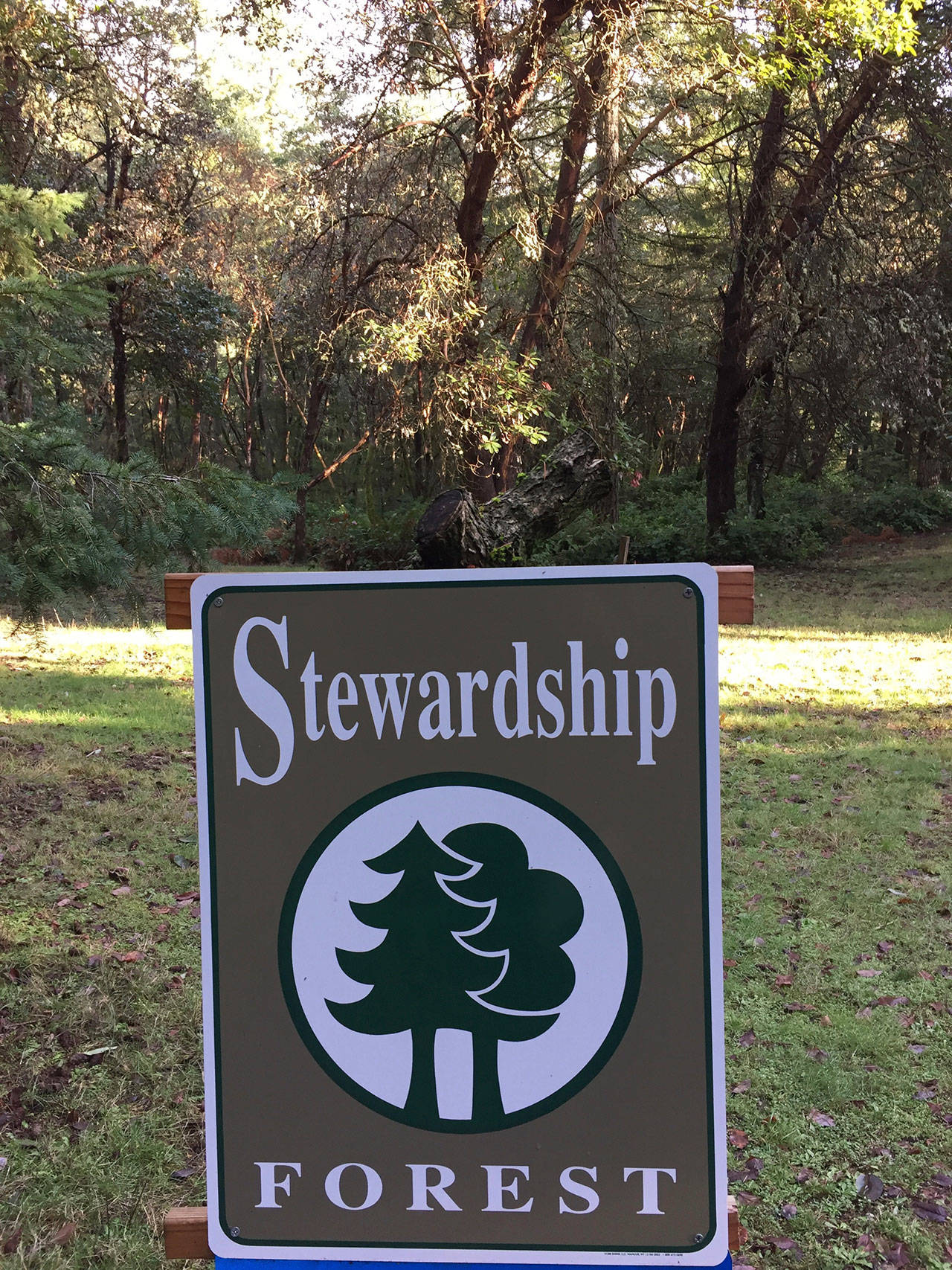For five years, photographer Susie Fitzhugh has lived on just under an acre of land adjacent to the Burton Acres Park. At first she found the tree-filled property quite daunting, even scary when the first big windstorm came through. Though she says she is, “still in awe of the huge trees that surround me,” she has conquered her fear because two years ago she took the Forest Stewardship Coached Planning class offered by Washington State Extension.
“Taking the forestry class gave me a lot more confidence about the health of my trees and some knowledge of how to spot a tree that might be in trouble,” Fitzhugh says.
The Forest Stewardship class is being offered on Vashon again this spring. While it was originally conceived as an outreach program for large forest owners who wanted to harvest their trees, the class, especially as it is taught on Vashon, has become much more.
Weekly classes during the eight-week long program begin with tree identification, so students can differentiate between the pines, firs, spruces and deciduous trees that grow on Vashon. A session on stand dynamics, also known as forest succession, explains the various stages forests go through as they mature and covers subjects such as stem exclusion and crown classes.
The class on forest soils begins with an explanation of Vashon’s glacial geology and also covers the microscopic fungi that live in the soil and form a symbiotic relationship with plants. Soil is the key to the types of trees that can grow on a site. On Vashon, the heavier soils of the west side nourish Western red cedars and hemlocks, while the light, gravely soils on Maury Island support our stands of Pacific madrone.
Other classes cover water, wildlife, invasive plants, and tree pests and diseases.
Guest speakers in past Vashon classes have included ethnobotanist Heidi Bohan, an expert on the ways native people used plants as food and medicine. She brought samples such as salal berry fruit leather for students to try.
In addition to the evening classes, books and materials, the course includes a day-long field trip to an actual forest, and a consultation site visit to each student’s property by an actual forester.
The class is a commitment of time and money, but it is priceless, especially if you do the homework and complete a Forest Stewardship Plan for your property. The plan makes you eligible for property tax reductions and conservation cost-share grants available through various agencies.
This is a university-based course taught by Washington State Extension faculty and other forestry professionals, but it’s accessible. As Fitzhugh notes, “The people who ran the program were enormously helpful and easy to understand; they were respectful of the forest we live in, in a way that seems contagious.”
Even if you don’t end up participating in one of the programs available to those who have completed the course and forestry plan, this class can change the way you look at a forest, teach you how to read patterns in the landscape and make you more conscious of both the vulnerabilities and resilience of forests, whether you own one or just enjoy walking through them.
— By Chris Woods
For The Beachcomber


